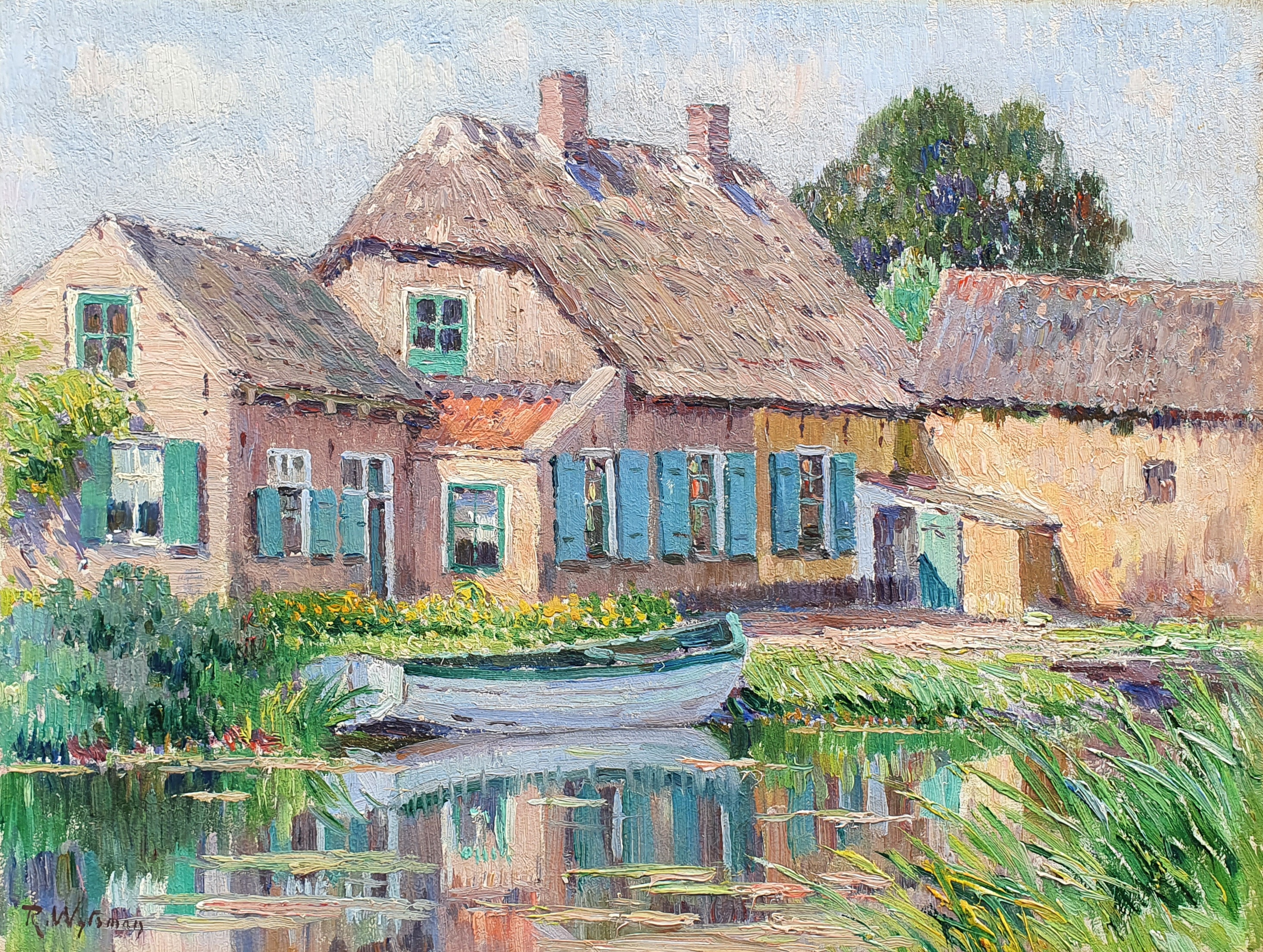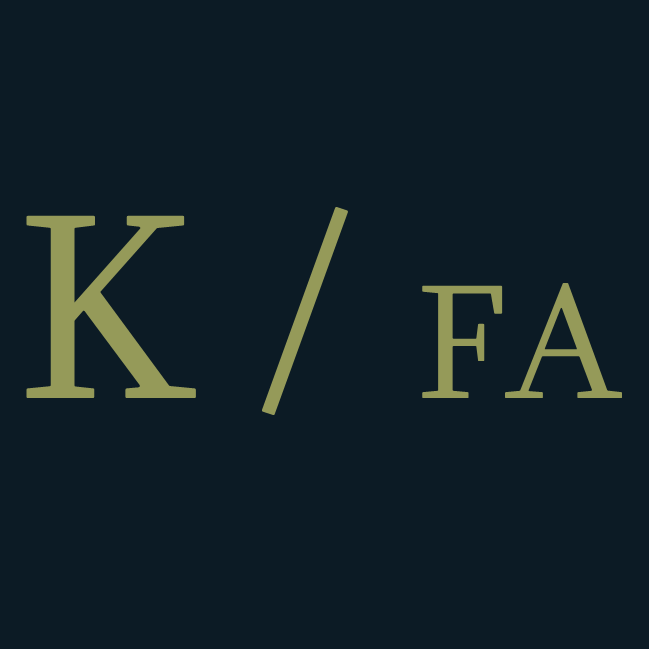Farm near Kralingen – Boerderij bij Kralingen
R.P. (Rodolphe) Wytsman

[EN]
Rodolphe Wytsman (1860-1927) stayed in The Netherlands between 1914 and 1918, to escape the terrors of the First World War. Together with his wife, Juliette, Rodolphe was one of the central figures in the group of Belgian refugee artists. He continued painting, taking up some typically Dutch landscapes like this view on a farm near the village of Kralingen (near Rotterdam). His Luminist version of Impressionism shows here in the way he depicted the flowers in the garden, and the (reflection of) the row boat in the middle of the image. Throughout this painting he used a varying brushstroke, adapting shape, direction and the thickness of the paint layer to the effect he wanted to convey.
[NL]
Rodolphe Wytsman (1860-1927) verbleef tussen 1914 en 1918 in Nederland, om het strijdgeweld van de Eerste Wereldoorlog te ontvluchten. Samen met zijn vrouw, Juliette, was Rodolphe een van de spilfiguren in de groep gevluchte Belgische vluchtelingen. Hij bleef in Nederland schilderen en hij nam het Nederlands landschap tot onderwerp, zoals deze boerderij bij Kralingen (bij Rotterdam). Zijn luministische variant van het impressionisme komt naar voren in de verbeeldde bloemen in de tuin, en de roeiboot en reflectie midden in beeld. Door het hele schilderij gebruikte hij een gevarieerde penseelstreek, waarbij hij vorm, richting en dikte van de verflaag aanwendde om het beoogd effect te verkrijgen.
[EN]
Rodolphe Paul Wytsman (1860-1927) was a Belgian painter, born in Dendermonde, and trained at the Academy for Visual Arts in Ghent. After finishing at the Academy, he travelled to Italy. Upon his return in 1883, he got to know Juliette Trulemans (1866-1925), who would later become his wife. For most of their career, the couple worked together, both working in their distinct style. Juliette would use a variety of thickly and thinly applied paint. Rodolphe used a technique more related to the Impressionists, using a variety of lively brushstrokes.
In 1884, Rodolphe Wytsman was one of the founding members of Les XX (les vingt), the group of avant-garde artists rebelling against the academic Salon and other conservative institutions. Wytsman quit his membership of the group after a couple of years. He again exhibited with its successive association: La Libre Esthetique, which was founded 1893.
With La Libre Esthetique, the Luminist movement gained momentum, thanks to painters like Emile Claus. Wytsman combined his Impressionist brushwork with the attention to light effects of Emile Claus, to create his ideosyncratic luminism. During the First World War, Rodolphe and Juliette Wytsman were among the many Belgian artists fleeing the terrors of war. They settled for the time in The Netherlands, with Rodolphe as one of the central figures in the community of Belgian artists.
[NL]
Rodolphe Paul Wytsman (1860-1927) was een Belgische kunstenaar, geboren in Dendermonde. Hij volgde zijn opleiding aan de academie voor beeldende kunsten in Gent. Nadat hij afstudeerde aan de academie, reisde hij naar Italië. Bij zijn terugkeer in 1883 leerde hij kunstenares Juliette Trulemans (1866-1925) kennen, die later zijn vrouw zou worden. Gedurende het grootste deel van hun carrière werkte het echtpaar veel samen, elk in hun eigen stijl. Juliette varieerde vooral in dik en dun aangebrachte verf. Rodolphe gebruikte een schildertechniek die vooral verwant is aan die van de impressionisten, met een variatie aan levendige penseelstreken.
In 1884 was Rodolphe Wytsman een van de stichtende leden van Les XX (les vingt), de groep van avant-garde kunstenaars die tegen de academische Salon en de conservatieve instituten streed. Wytsman zegde zijn lidmaatschap van de groep na een paar jaar op. Hij sloot zich later alsnog aan bij de opvolger van Les XX: La Libre Esthetique, de groep die in 1893 werd opgericht.
Dankzij La Libre Esthetique kreeg de het Belgisch luminisme vaart, vooral dankzij Emile Claus. Wytsman combineerde zijn impressionistische penseelvoering met de aandacht voor lichteffecten van het luminisme. Daarmee maakte hij een heel eigen versie van het luminisme. Gedurende de Eerste Wereldoorlog vluchtten Rodolphe en Juliette Wytsman, net als veel andere Belgische kunstenaars naar Nederland.
| Medium | Oil on panel |
| Dimensions | 27,1 x 36 cm |
| Price | € 3750 |



